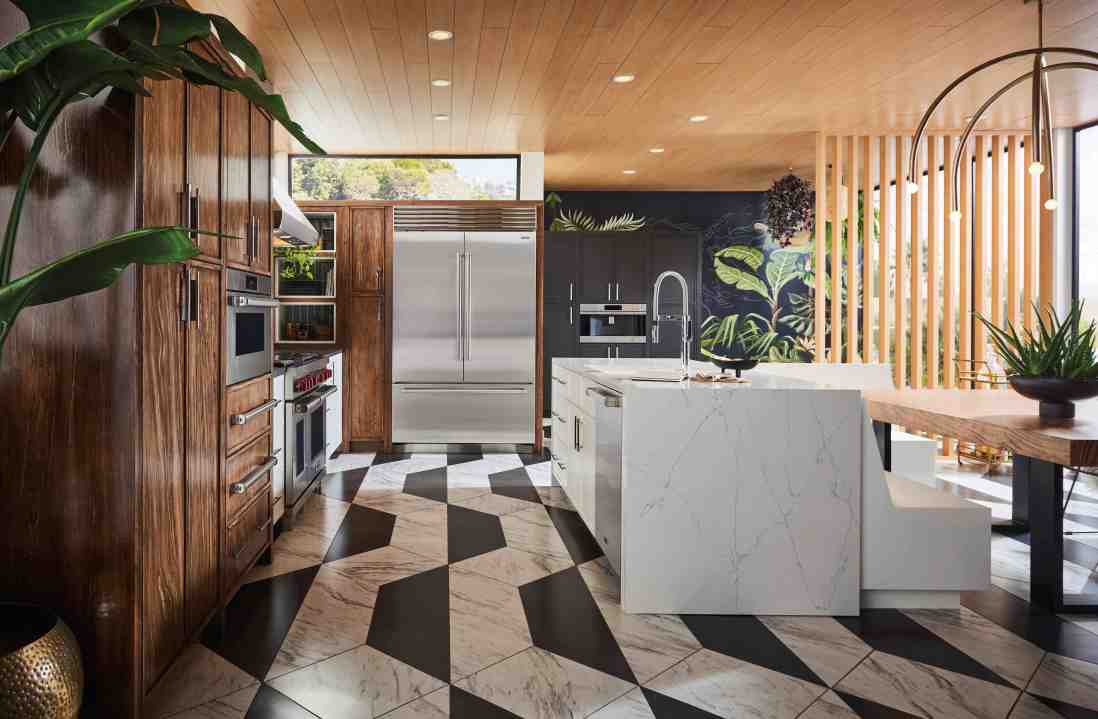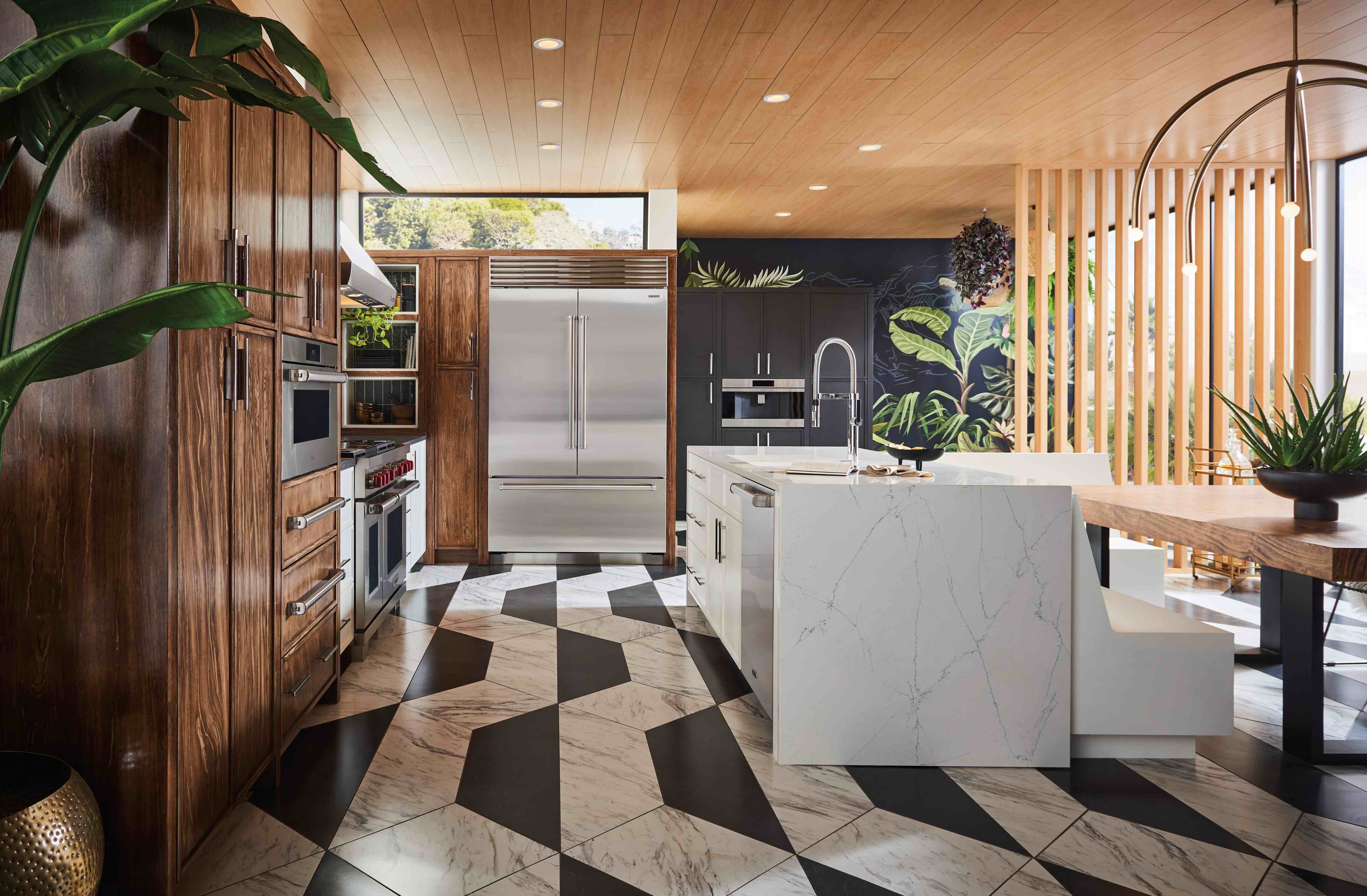At the start of this month, the modish kitchen appliance brand Sub-Zero & Wolf proudly announced the launch of its Classic French Door fridge-freezer. This beast of a machine, featuring Nasa-inspired air purification technology and an automatic ice-maker complete with ‘party mode’, will set you back £23,868 – or the best part of a year’s salary for the average UK worker.
Admittedly it does look like an impressive piece of kit, what with its nano-coated glass shelves which stop spills from spreading, crisper drawers with humidity levels designed to keep food fresher for longer and shadow-reducing interior lights. And the kind of people who truly care about having a Sub-Zero & Wolf insignia on their fridge – or even knew it was a thing – are probably not too worried about its price tag.

But while this particular product might be something of a niche purchase, it’s also indicative of a wider trend in the highest echelons of the housing market. Finding a property with the right number of bedrooms or in the right postcode is no longer enough for the wealthiest buyers – their homes need to be filled with the right brands, too.
In the rarefied world of top-end London property, Sub-Zero & Wolf kitchen appliances, Lutron lighting, Dornbracht bathroom fittings and de Gournay wallpaper and fabrics are what help sell multi-million-pound flats and eye-wateringly expensive houses. For the super-rich, these labels are just as evocative of having made it as Hermes in the wardrobe, Bugatti in the driveway or Chateau Lafite in the wine cellar.
‘Luxury brands are an endorsement that no expense has been spared, and this first impression a buyer has of a property is all important,’ says Jenny Naylor, brand consultant with development and investment real estate firm Henigman Limited. Simon Barry, head of new developments at estate agent Harrods Estates, agrees that high-rolling buyers have an increasingly keen eye for the best-of-the-best gadgets. ‘Buyers are more brand-aware than they used to be. Whereas Gaggenau [kitchen appliances] used to be considered top of the range, high-end buyers are unlikely to be impressed by anything less than SZW and will also pull developers up when they spot signs of obvious value-engineering like using cheaper brands for appliances which are hidden in utility cupboards,’ he says.
These top-end brands have enough selling power to regularly feature in property brochures. Last year, for example, Savills sold a three-bedroom, £12.995 million apartment at the Chelsea Barracks development in west London at least partly on the strength of its spec – which included a Crestron audio-visual system, Lutron smart lighting and SZW appliances.
‘Luxury brands are an endorsement that no expense has been spared, and this first impression a buyer has of a property is all important’
Should you be in the market for a three-bedroom apartment on The Bishops Avenue, Hampstead’s original millionaire’s row, Martyn Gerrard is selling one for £2.95 million. Its brochure proudly promises a kitchen ‘curated’ by interior designer Oliver Burns and featuring a double Quooker boiling water tap (from £1,200), Miele appliances (washer dryers from £1,649) and a Franke stainless steel sink (from around £500 for a basic model).
Alex Woodleigh-Smith, managing director of buying agency AWS Prime, said his buyers expect features such as Drummonds bathrooms (copper-wrapped bathtubs start at £9,450, plus VAT) and Lutron lighting. They also spot finishing touches like Armac Martin ironmongery on a bespoke handcrafted kitchen (cabinet knobs are priced from £10.80 to £110.40), de Gournay wallpaper in the bedroom (from around £180 to £1,000 per square metre), lighting design by Soane Britain and Jamb fireplaces (price on application) throughout. ‘These are the current in-the-know names which get ears pricked-up,’ he says.
Of course, the problem is that it doesn’t take long for the gadgets and brands of the moment to be overtaken by the next big thing. Monograms, once a desirable design feature, are now very much out, says Naylor – which is bad news for owners who invested in apartments in London’s Damac Tower. It was completed last year with less-than-subtle Versace Home logos built into the floors and bathroom tiles. Another turn-off, says Naylor, are beds with pop-out TV units now that buyers are all about peaceful sanctuaries where they can concentrate fully on sleep and wellness.
James Waight, regional director at John D Wood & Co, adds built-in coffee machines and steam ovens to the ick list. ‘While these appliances were once seen as cutting-edge and luxurious, many buyers are now finding that they don’t use them as much as they thought they would, and they can quickly become outdated,’ he says.
And many buyers are deeply suspicious of too much tech, no matter how premium the brand. ‘Buyers recognise Lutron and Creston are market leaders, but many are more wary of home automation generally, as they don’t like the complexity and know that if the system goes down, they won’t even be able to turn on the TV,’ says Barry.







Comments